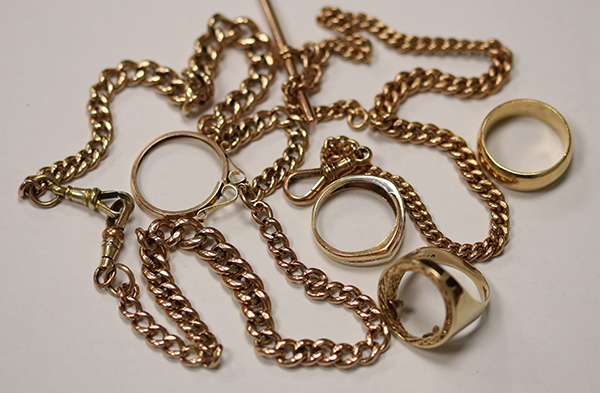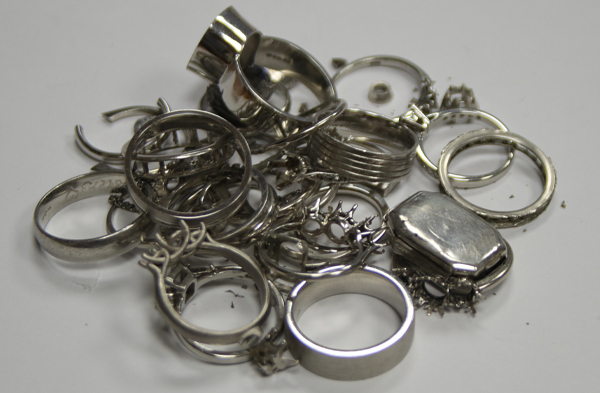
Exploring the Distinction Between Yellow Gold and White Gold
Yellow Gold and White Gold: A Comparison of Two Precious Metals
In the world of jewellery, yellow gold and white gold are highly sought-after choices, each possessing its own unique characteristics and allure. In this article, we will delve into the differences between the two, shedding light on their composition, properties, advantages, disadvantages, and maintenance requirements.
By understanding these distinctions, readers can make informed decisions when purchasing gold jewellery and select the perfect piece that suits their preferences and style.
Understanding Yellow Gold: A Symbol of Timeless Elegance
Yellow gold has captivated civilizations throughout history with its beauty and rarity. With its vibrant colour, yellow gold has a rich cultural significance and has been treasured for centuries. The purity of yellow gold jewellery is measured in carats, with 24 carat gold being the purest form.
Pure gold is naturally yellow and exceptionally soft, which makes it more prone to scratches and dents. However, it possesses remarkable resistance to tarnish, corrosion, and rust. This precious metal holds its value over time and is highly regarded for its enduring beauty.
Yellow gold has a long and illustrious history, having been used in gold jewellery for centuries. Gold jewellery was popular among ancient civilizations such as the Egyptians, Greeks, and Romans who prized its beauty and rarity.
Throughout the ages, yellow gold has remained a symbol of timeless elegance.
In modern times, pure gold is often alloyed with other metals to create durable pieces that are more resistant to scratches and dents than pure 24 carat gold.
This creates different shades of yellow gold including rose gold which is created by adding copper or silver alloys to enhance its pink-hued colour. Rose gold has also become increasingly popular over recent years due to its unique hue and romantic connotations.
Unveiling White Gold: The Contemporary Alternative
White gold emerged in the early 20th century as a response to the growing demand for silver-coloured jewellery. It offers a sleek and modern alternative to traditional yellow gold. White gold is an alloy created by combining pure gold with white metals such as nickel, palladium, or silver.
This alloying process imparts a distinctive silvery-white appearance to the gold, making it an excellent choice for those who prefer a silver-toned metal with the durability and prestige associated with gold.
White gold has been used in jewellery since the early 20th century, but it wasn’t until the 1920s that it started to gain widespread popularity. This era marked a shift towards modernity and elegance in jewellery design, and white gold became a symbol of these contemporary aesthetics.
Its clean and sophisticated appearance made it particularly appealing for engagement rings and wedding bands, adding a touch of glamour to these meaningful pieces of jewellery. During this period, white gold jewellery was often set with sparkling diamonds or other precious gemstones, further enhancing its allure.
As time went on, white gold’s popularity continued to grow, captivating both traditional and contemporary jewellery enthusiasts. Its versatile silver-white hue complements a wide range of styles, from classic to avant-garde.
Jewellers have embraced the possibilities offered by white gold’s malleability, crafting intricate and unique designs that showcase its inherent beauty.
In recent years, there has been a surge of experimentation in white gold jewellery design, with some artisans exploring innovative combinations of yellow and white gold to create captivating contrast and visual interest in their creations.
This blending of warm and cool tones adds an intriguing dimension to the jewellery, appealing to those who seek something truly distinctive.
White gold’s allure lies not only in its aesthetic appeal but also in its ability to effortlessly adapt to various white gold jewellery designs.
Whether it’s a delicate necklace, an ornate bracelet, or a statement ring, white gold’s versatility allows it to shine in any setting. Its inherent elegance and timeless charm make it a favourite choice for both everyday wear and special occasions, ensuring that white gold remains a cherished and beloved choice for discerning jewellery lovers.
Composition and Properties: Understanding the Differences
Pure gold consists of at least 99.9% gold, which gives it its characteristic yellow hue. However, this precious metal is relatively soft and malleable, making it less suitable for gold jewellery that requires strength and durability. To address this, yellow gold is often mixed with other metals, such as copper or silver, to create different gold alloys with varying properties and colours.
White gold is created by alloying pure gold with white metals such as nickel, palladium, or silver. The addition of these alloying metals gives white gold its distinctive silvery-white colour. To achieve the desired appearance, the ratio of gold to alloying metals may vary.
Additionally, white gold jewellery is often plated with a thin layer of rhodium to enhance its shine and maintain its bright white colour over time.
Advantages and Disadvantages: Weighing the Pros and Cons
Exploring the advantages and disadvantages of yellow gold and white gold will help you make an informed choice that suits personal preferences and style for your gold jewellery.
Yellow Gold
Advantages:
- Timeless Elegance: Yellow gold carries a classic appeal that transcends trends and time, making it an enduring choice for gold jewellery.
- Resistant to Tarnish: Pure gold is highly resistant to tarnish, corrosion, and rust, ensuring that your jewellery retains its lustrous appearance.
Disadvantages:
- Softness: Pure gold is relatively soft, making it more prone to scratches and dents. It requires careful handling and maintenance to preserve its beauty.
- Higher Cost: Compared to white gold, pure yellow gold is often more expensive due to its higher purity level.
White Gold
Advantages:
- Versatility: White gold offers the appeal of silver-coloured jewellery while retaining the durability and prestige associated with gold. It provides a versatile option for a wide range of jewellery designs.
- Modern Aesthetic: White gold has a contemporary look that complements a variety of styles, making it a popular choice among fashion-forward individuals.

Disadvantages:
- Rhodium Plating: Over time, the rhodium plating on white gold jewellery may wear off, requiring periodic re-plating to maintain its bright white appearance.
- Allergies: Some individuals may have allergic reactions to certain alloying metals, such as nickel, commonly used in white gold. It is important to consider any known metal allergies before selecting white gold jewellery.
Maintenance and Care: Preserving the Beauty of Gold and White Gold
Proper maintenance and care are crucial for both yellow gold and white gold jewellery to preserve their beauty and longevity. Here are some general tips to help you maintain your precious pieces:
Regular Cleaning:
- Use a mild soap and warm water solution to clean your gold and white gold jewellery.
- Gently scrub the jewellery with a soft brush, paying attention to hard-to-reach areas.
- Rinse the jewellery thoroughly with clean water and pat dry with a soft cloth.
Avoid Harsh Chemicals:
- Remove your gold and white gold jewellery before using harsh chemicals, such as bleach or chlorine, which can damage the metals and gemstones.
Storage:
- Store your gold and white gold jewellery in separate compartments or soft pouches to prevent scratching and tangling.
- Avoid exposing your jewellery to excessive moisture or direct sunlight, as it can cause damage and discoloration.
Professional Maintenance:
- Periodically visit a reputable jeweller for professional cleaning, polishing, and inspection.
- Professionals can assess the condition of your jewellery, check for loose gemstones or damaged settings, and provide any necessary repairs.
By following these maintenance guidelines, you can enjoy your gold and white gold jewellery for years to come, ensuring they continue to shine and retain their value.
Yellow gold and white gold offer distinct options for jewellery enthusiasts, each with its own allure, characteristics, and maintenance requirements. Yellow gold embodies timeless elegance and is highly resistant to tarnish, while white gold provides a contemporary alternative with its silvery-white appearance.
Understanding the composition, properties, advantages, disadvantages, and proper care of both yellow gold and white gold jewellery is essential when selecting the perfect piece. Whether you prefer the classic charm of yellow gold or the modern appeal of white gold, both options hold their unique beauty and significance.
As you embark on your journey to find the perfect piece of jewellery, consider the distinct qualities of yellow gold and white gold, allowing you to make an informed choice that reflects your personal style and resonates with your preferences.

+ There are no comments
Add yours